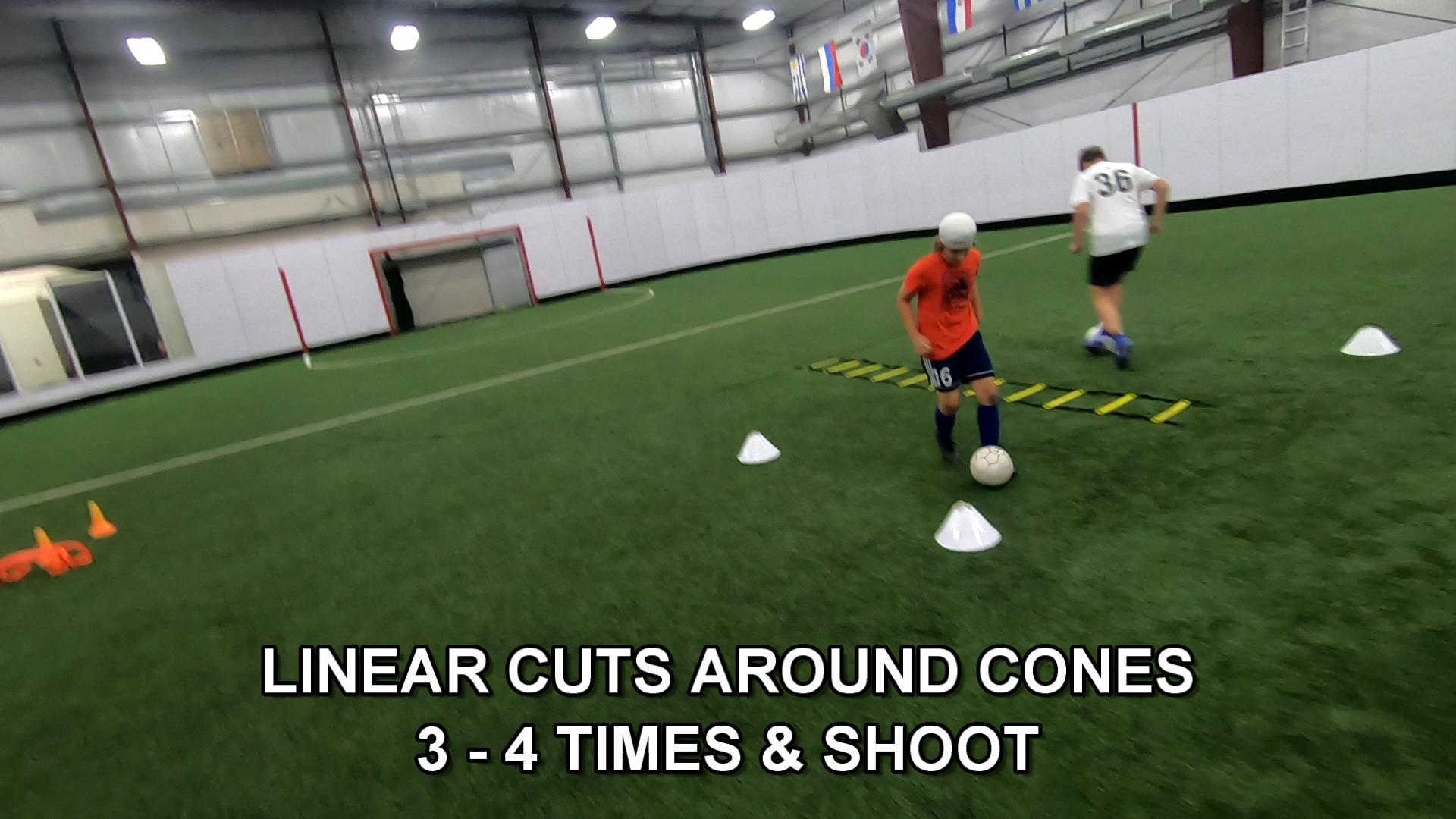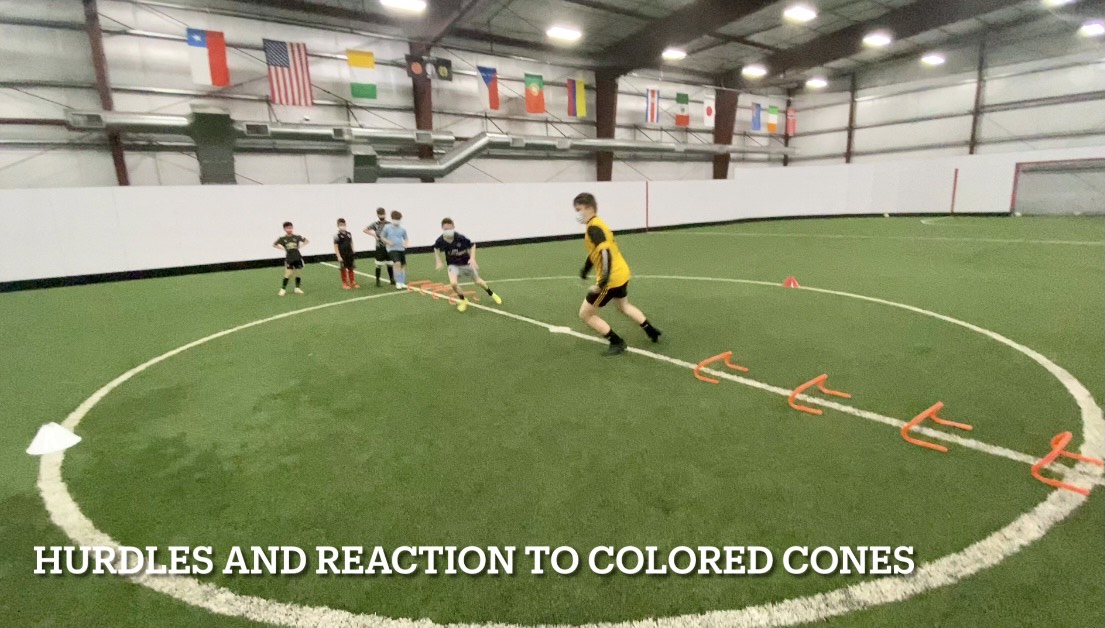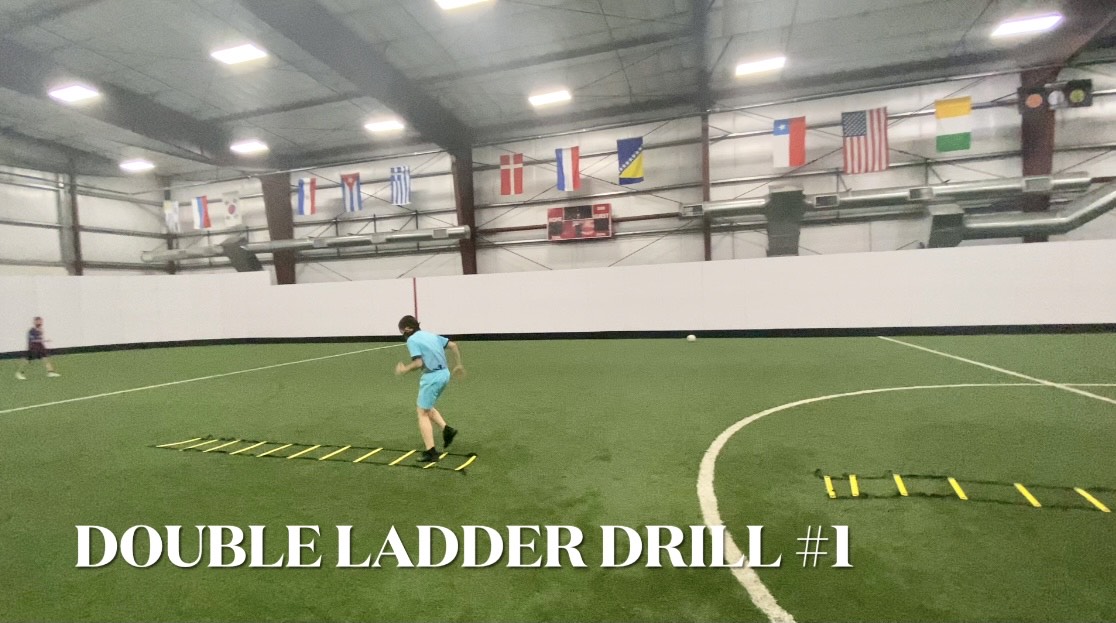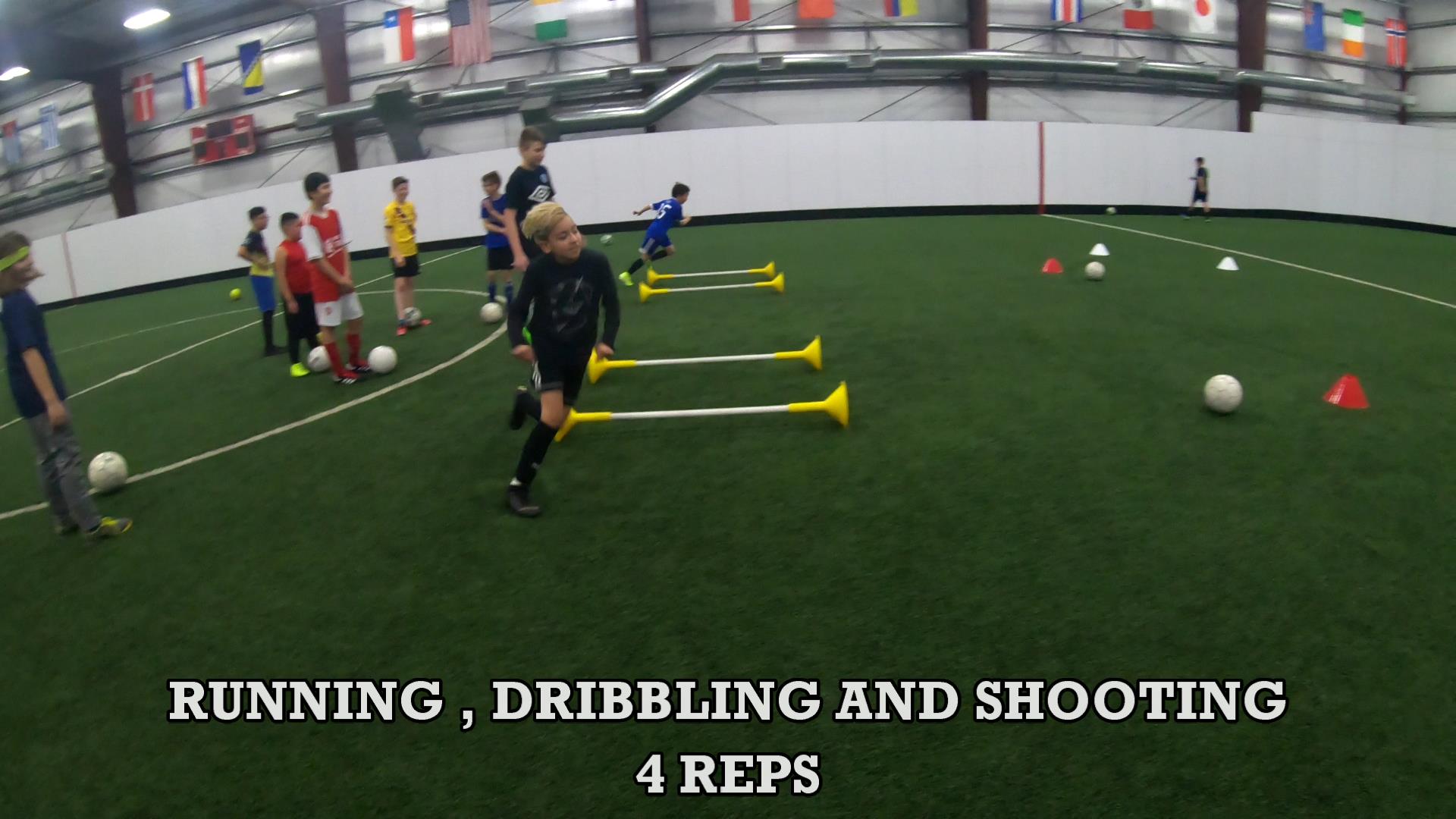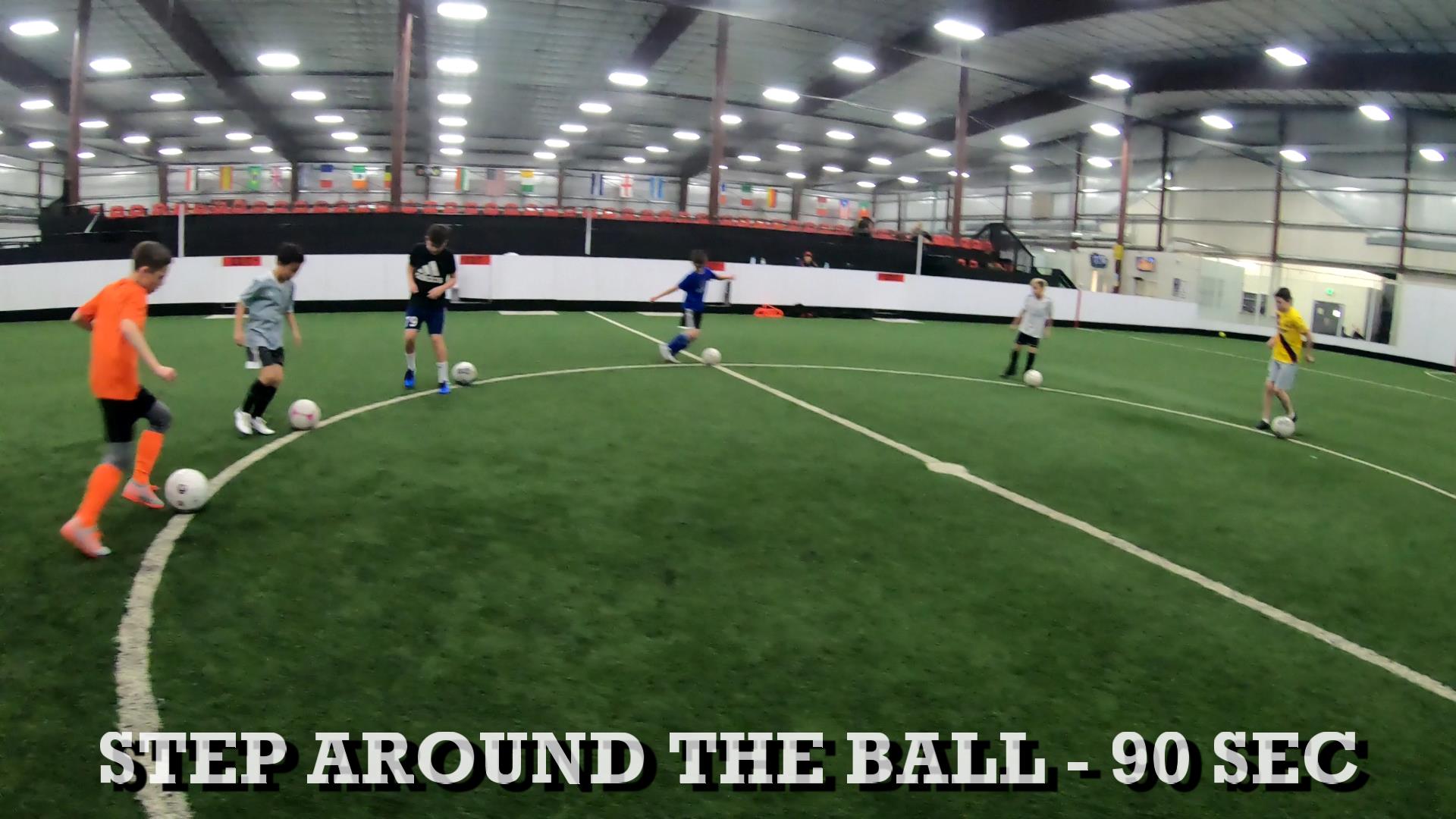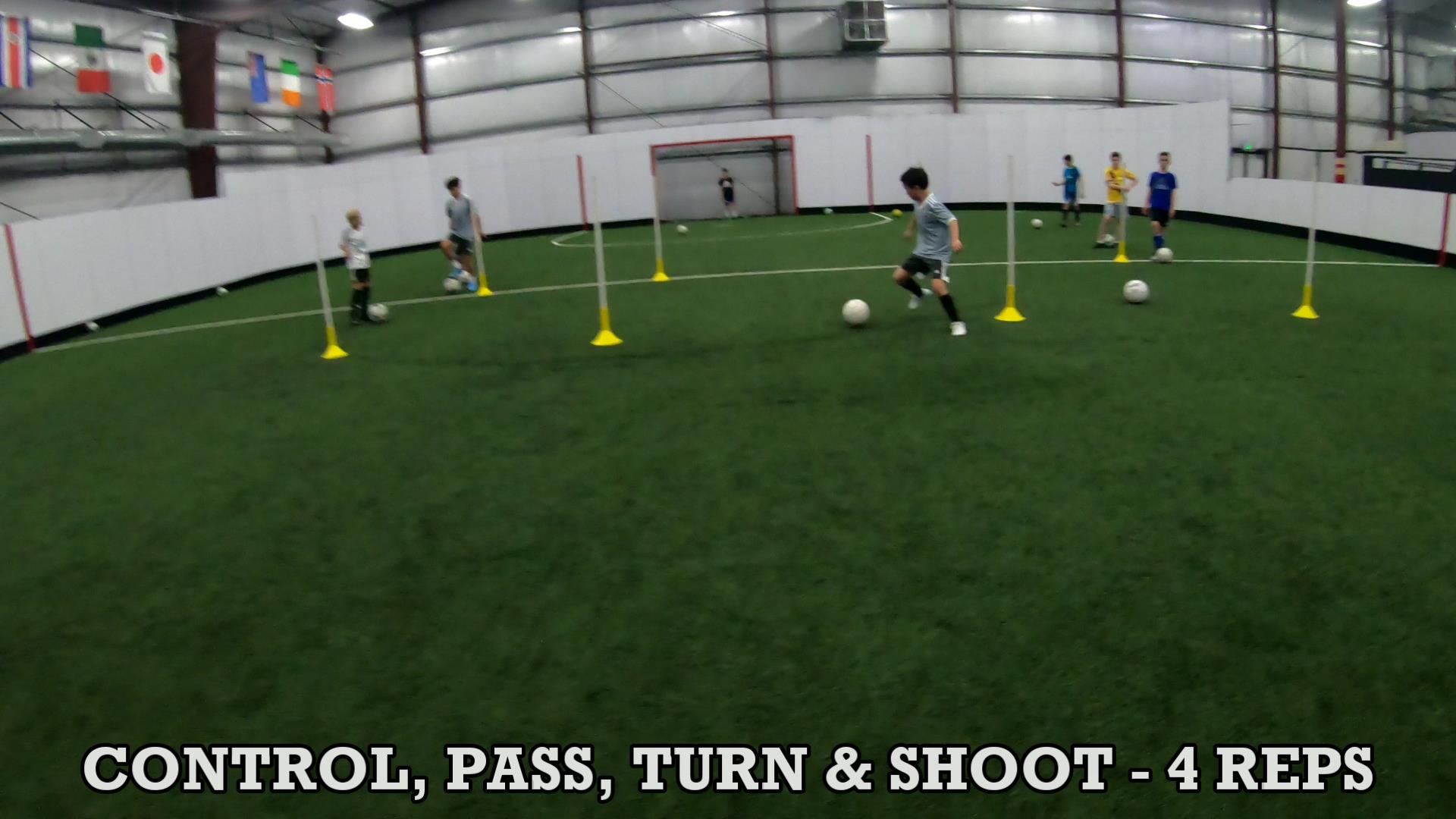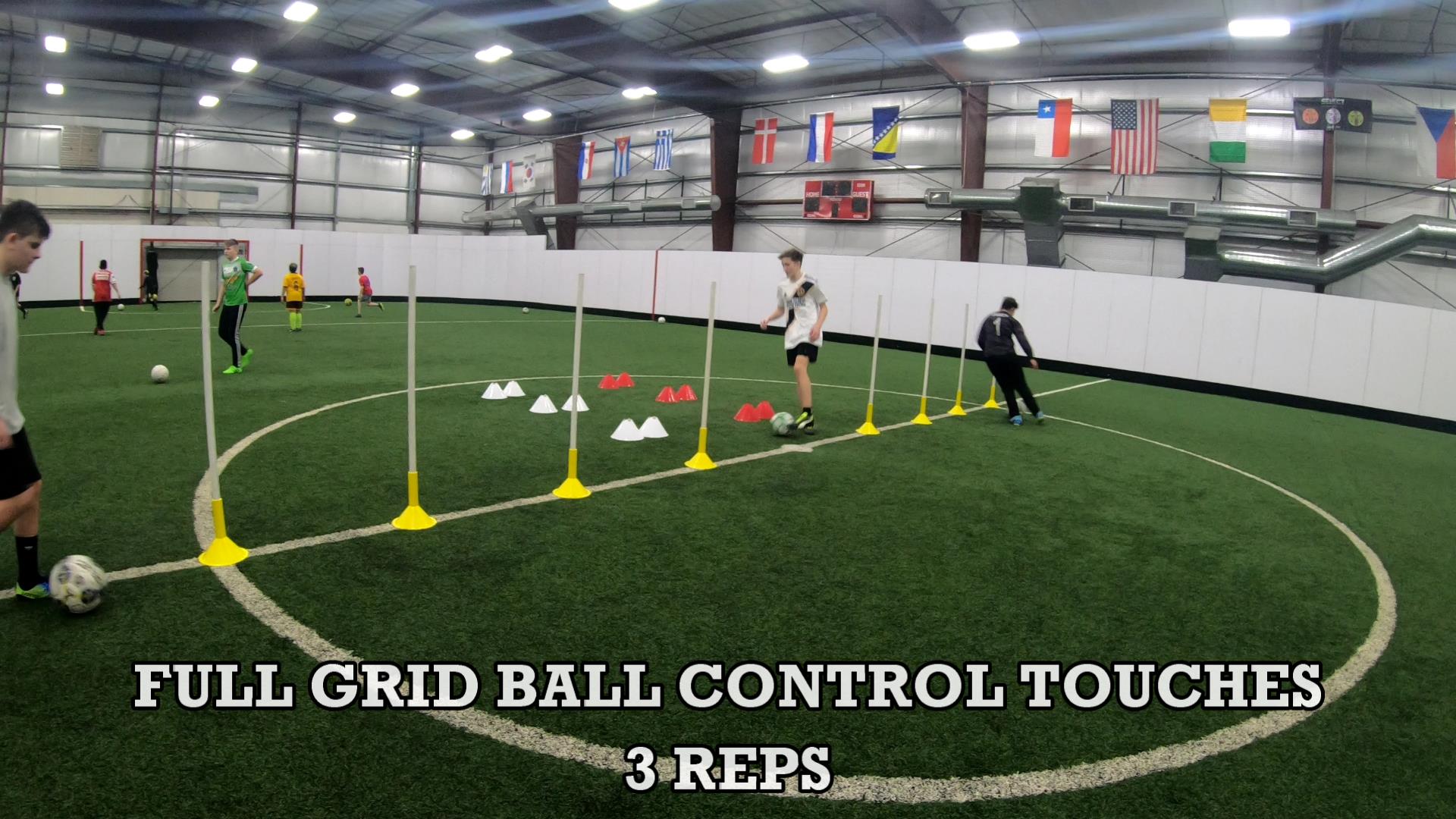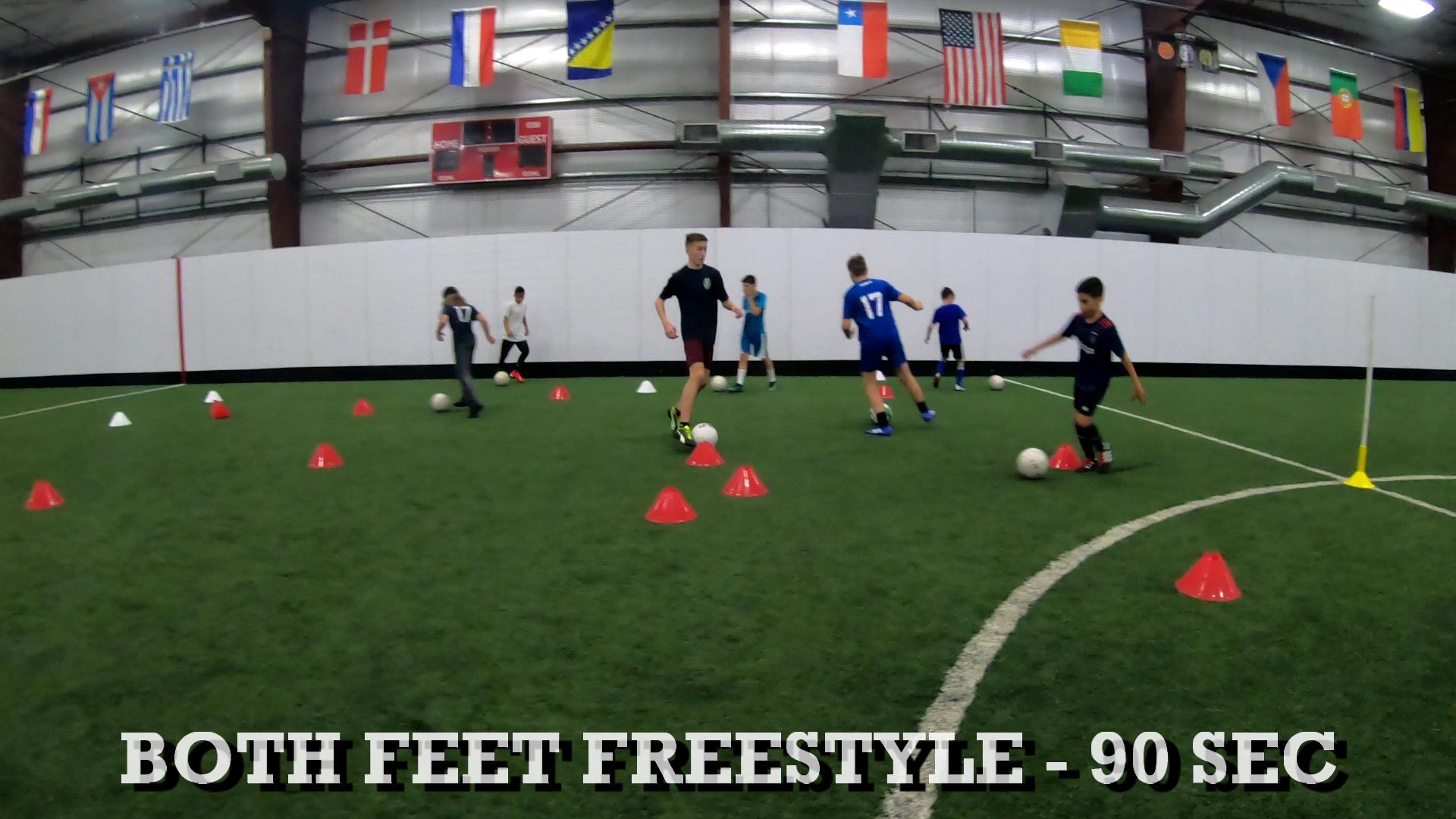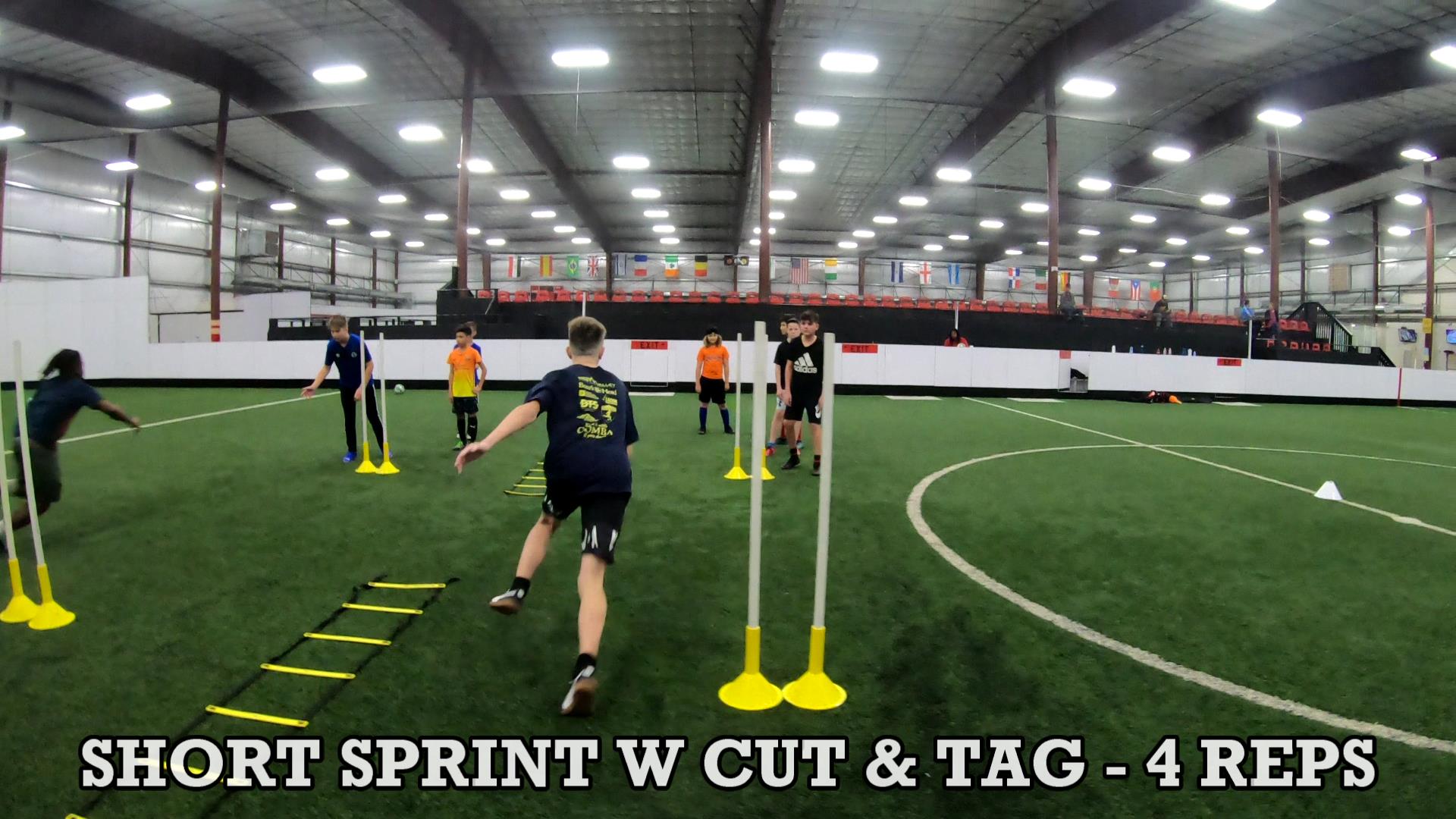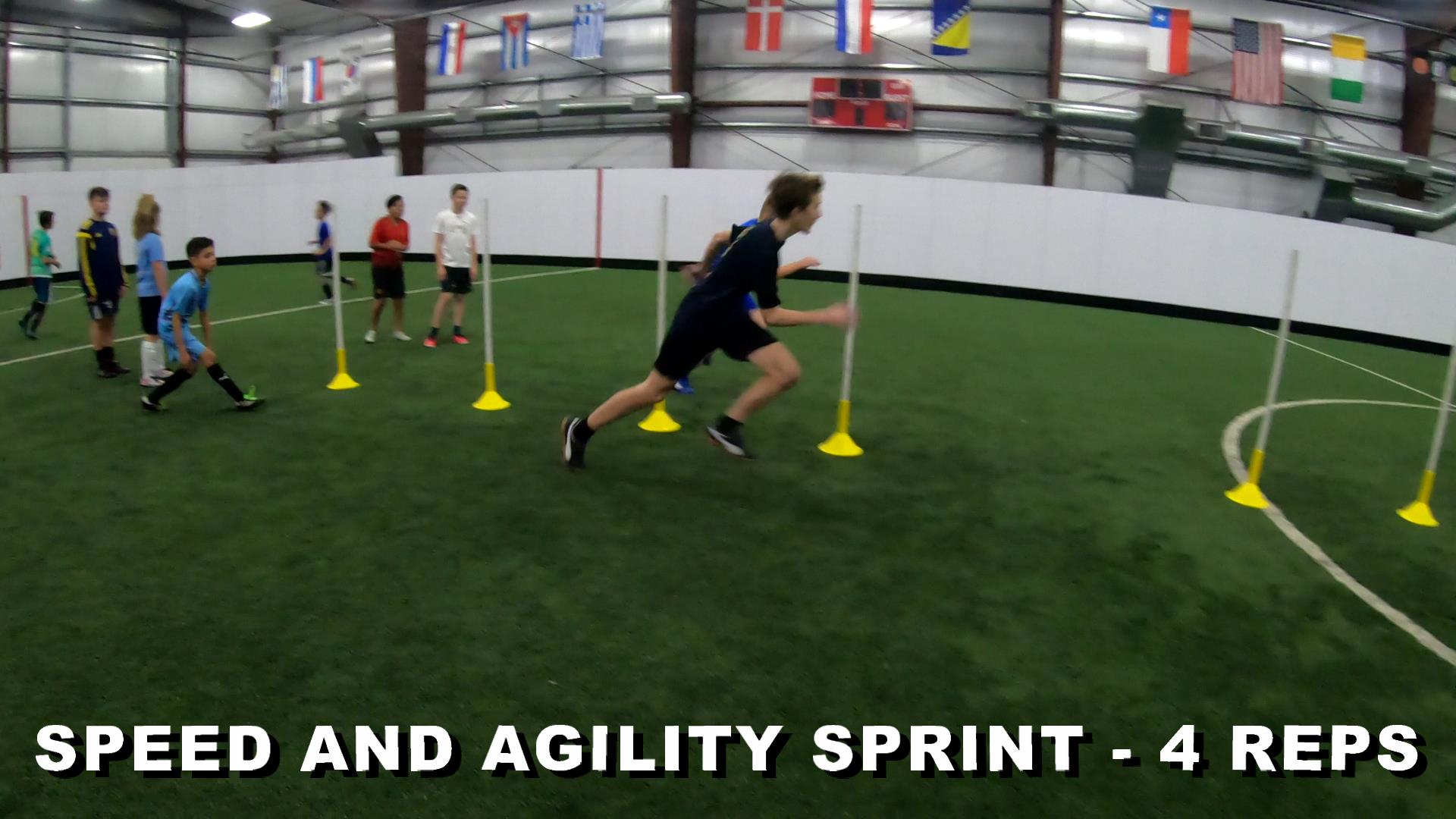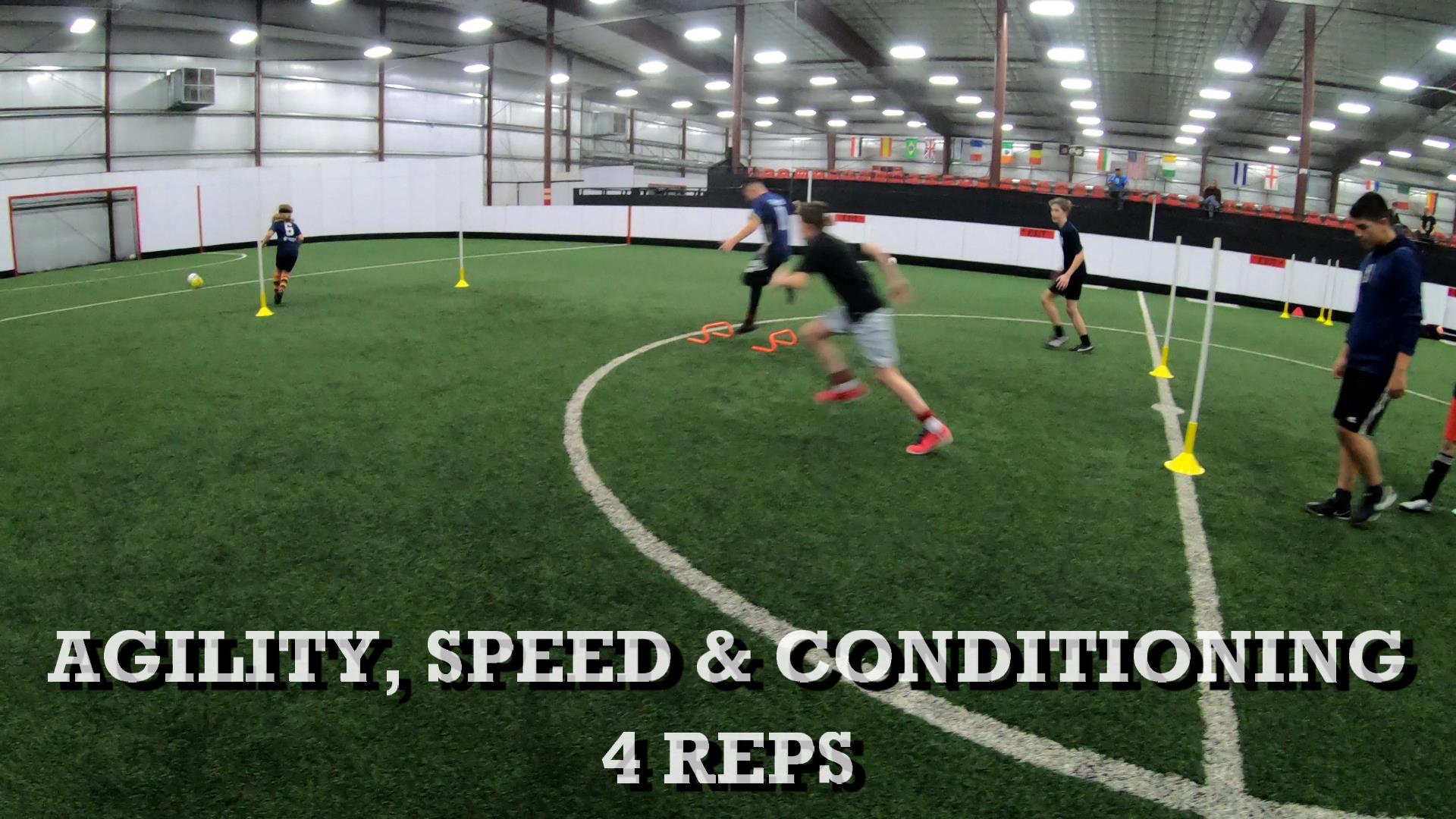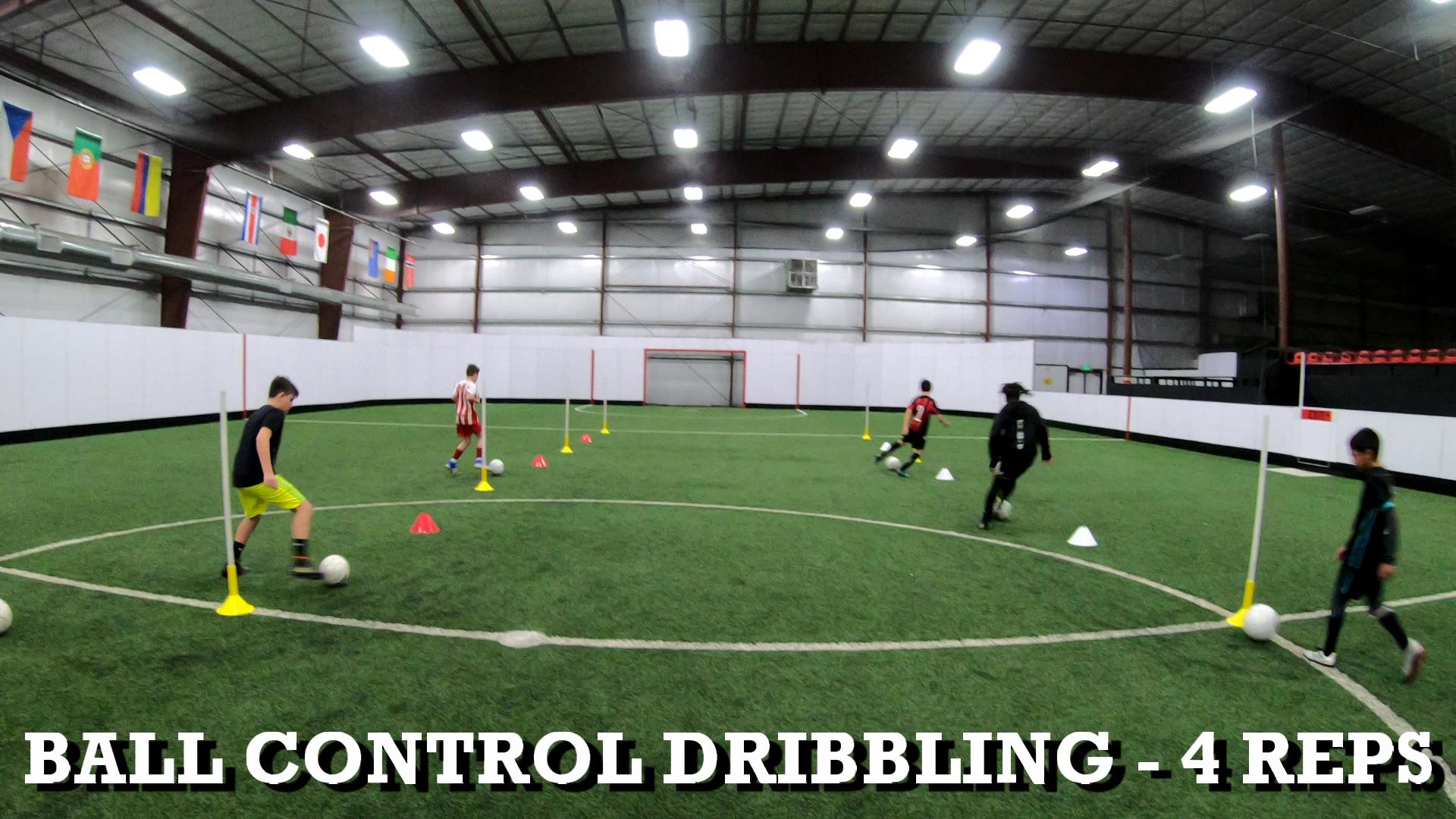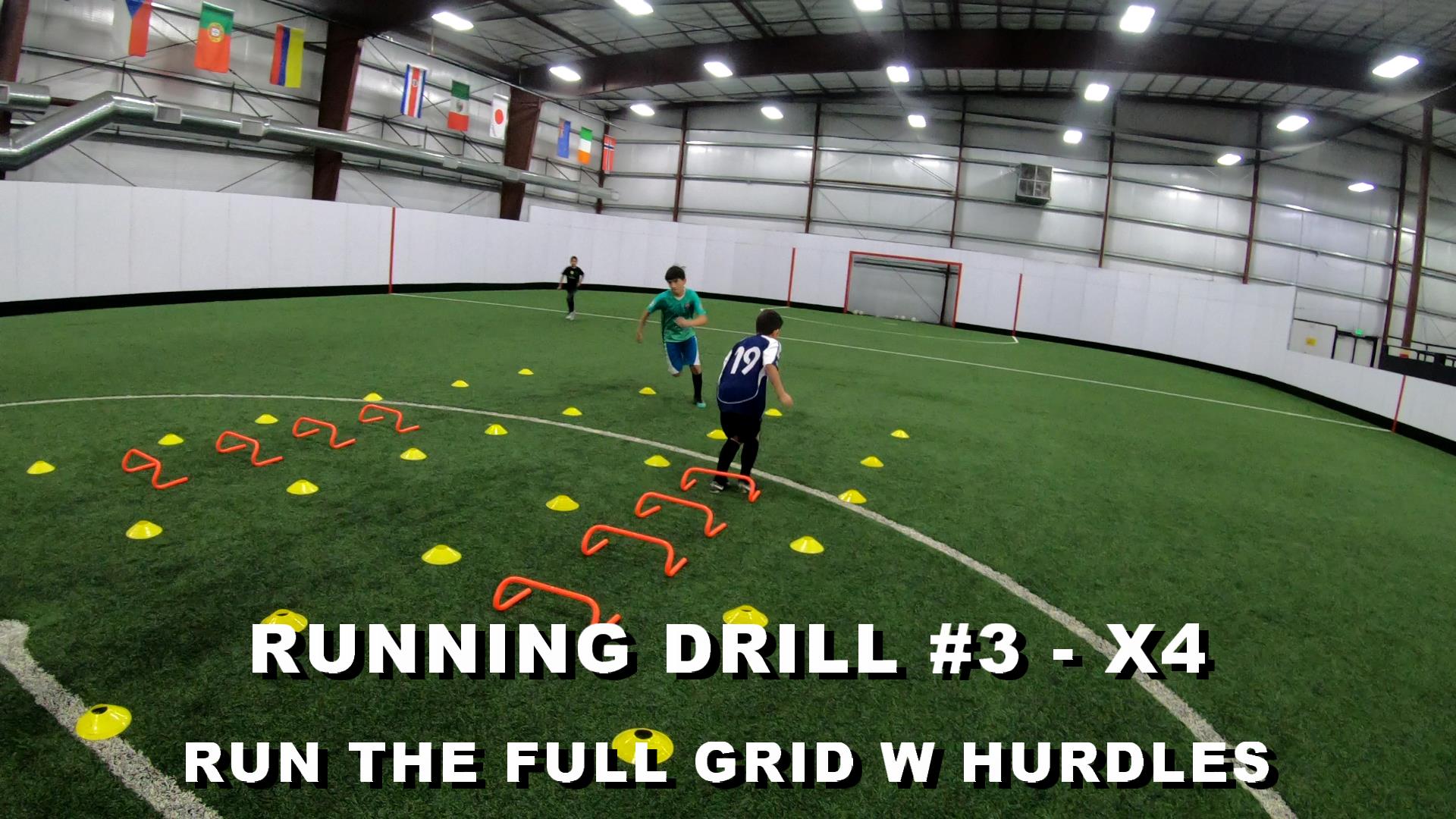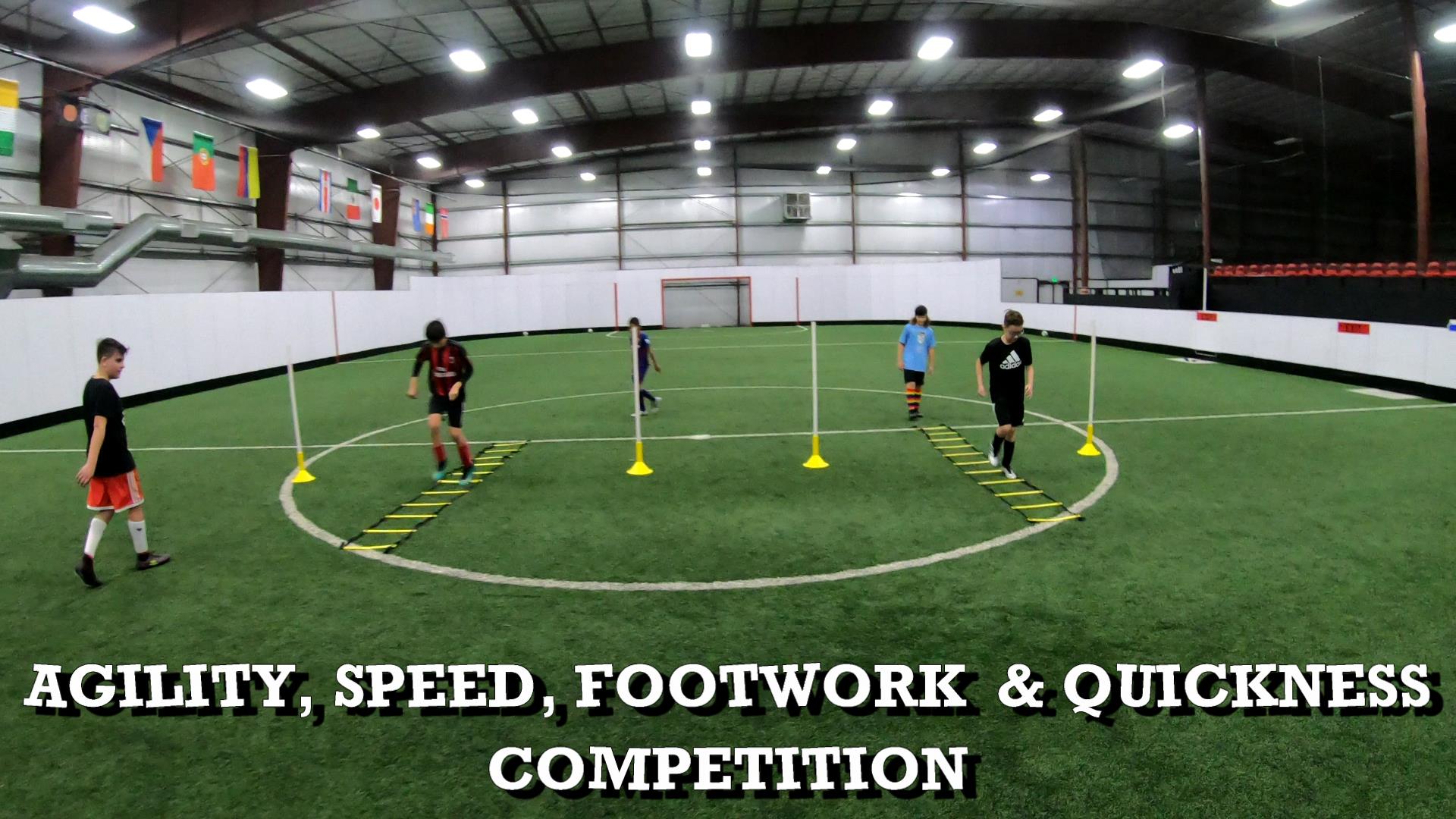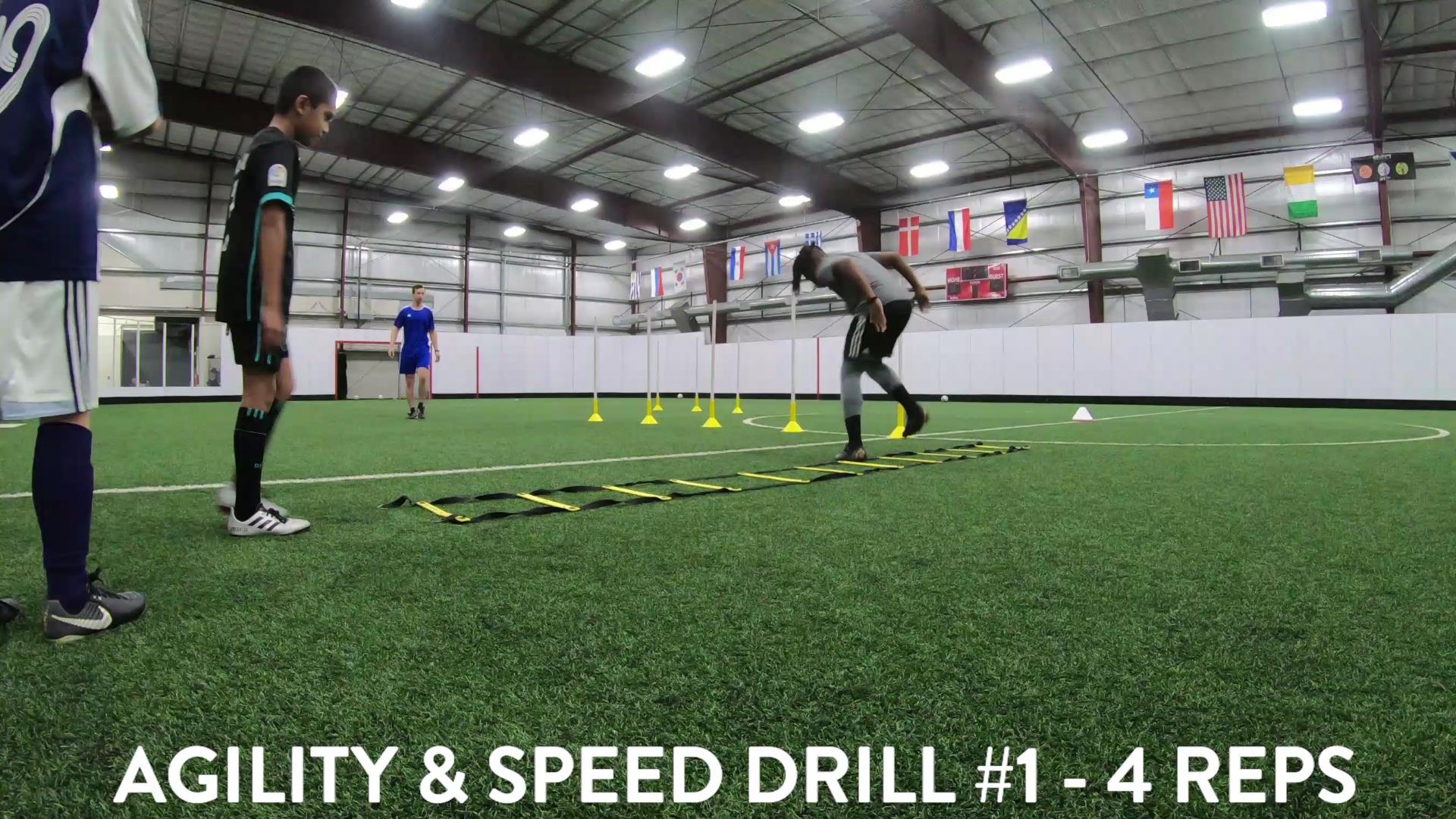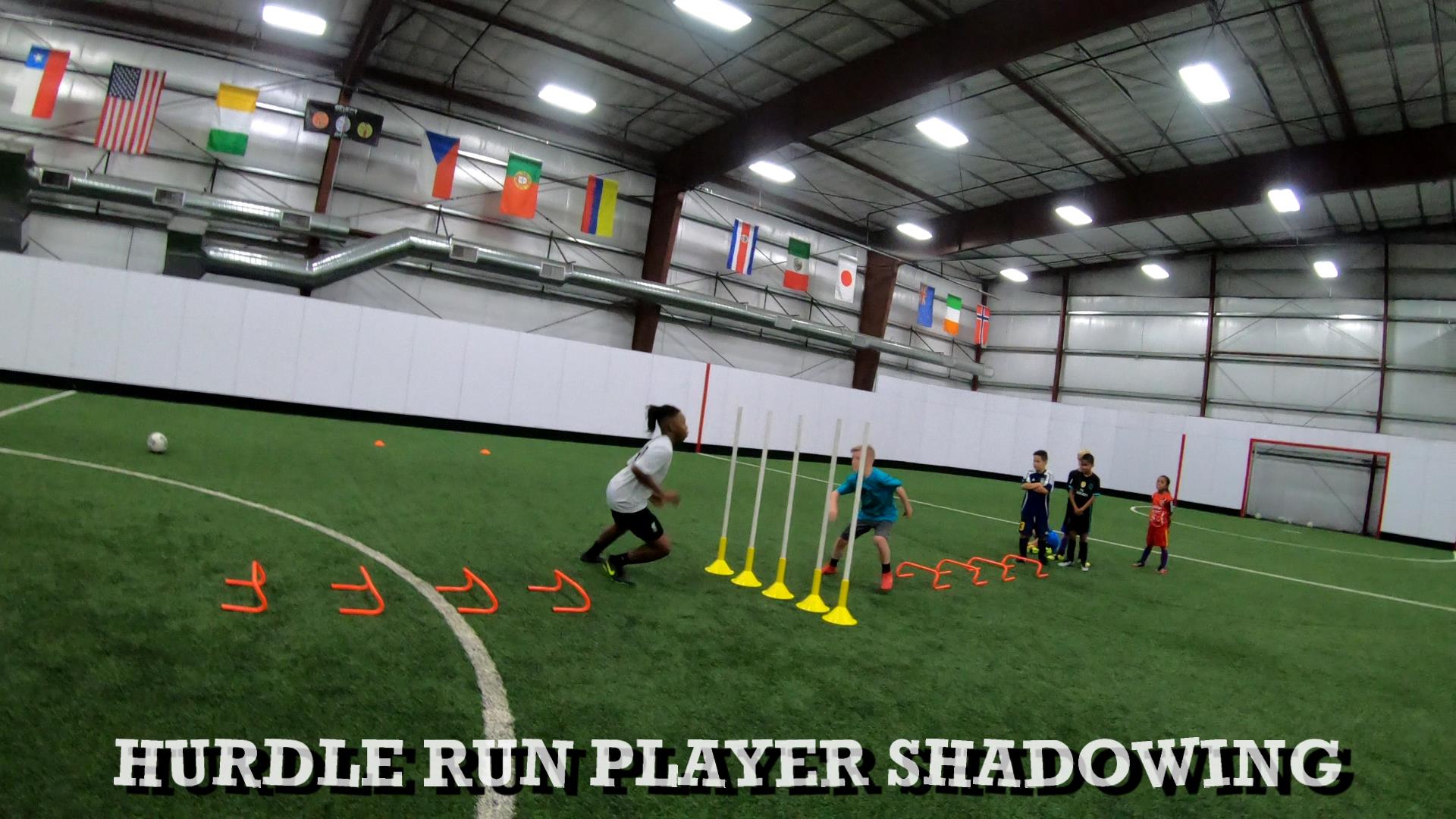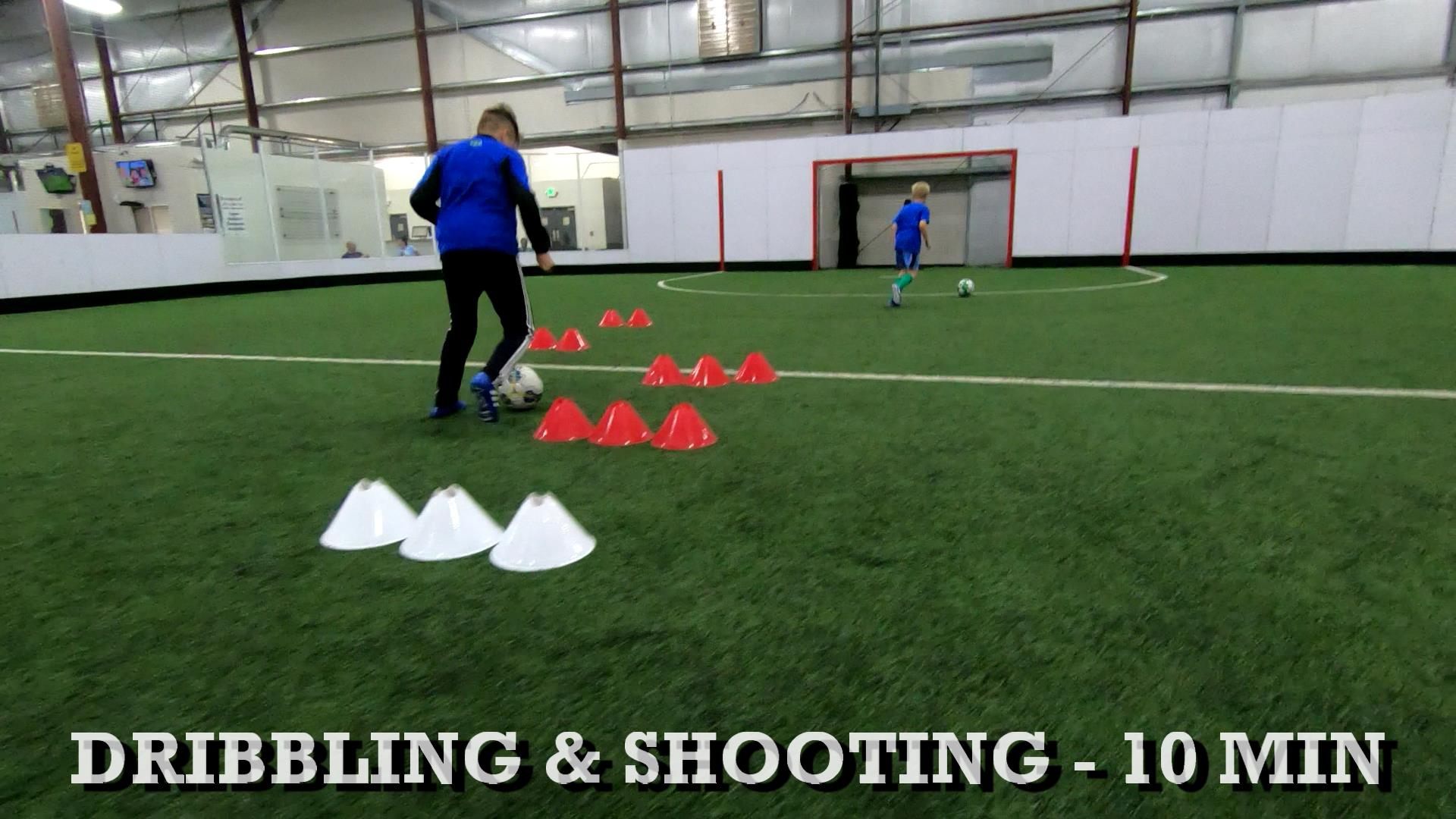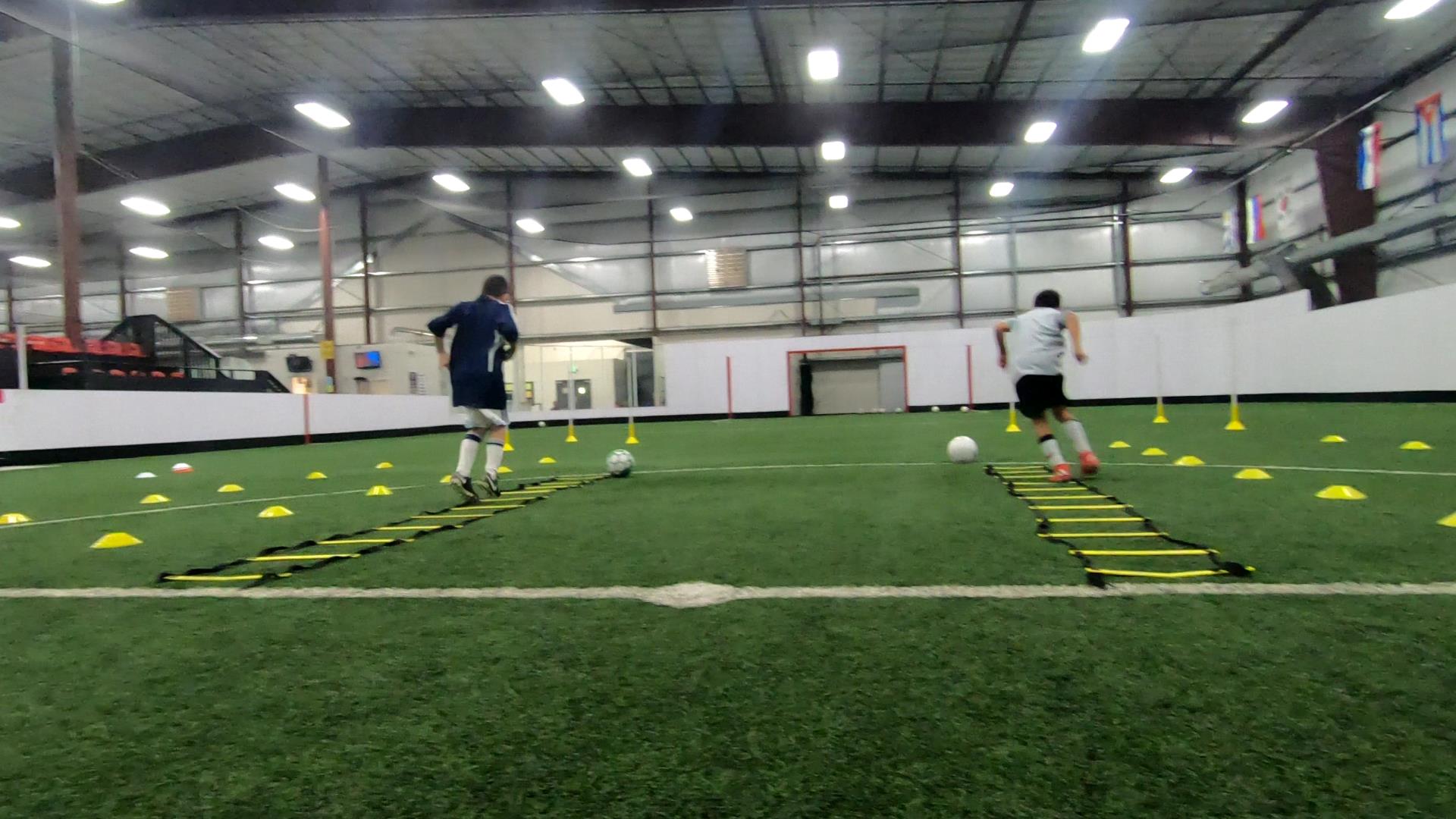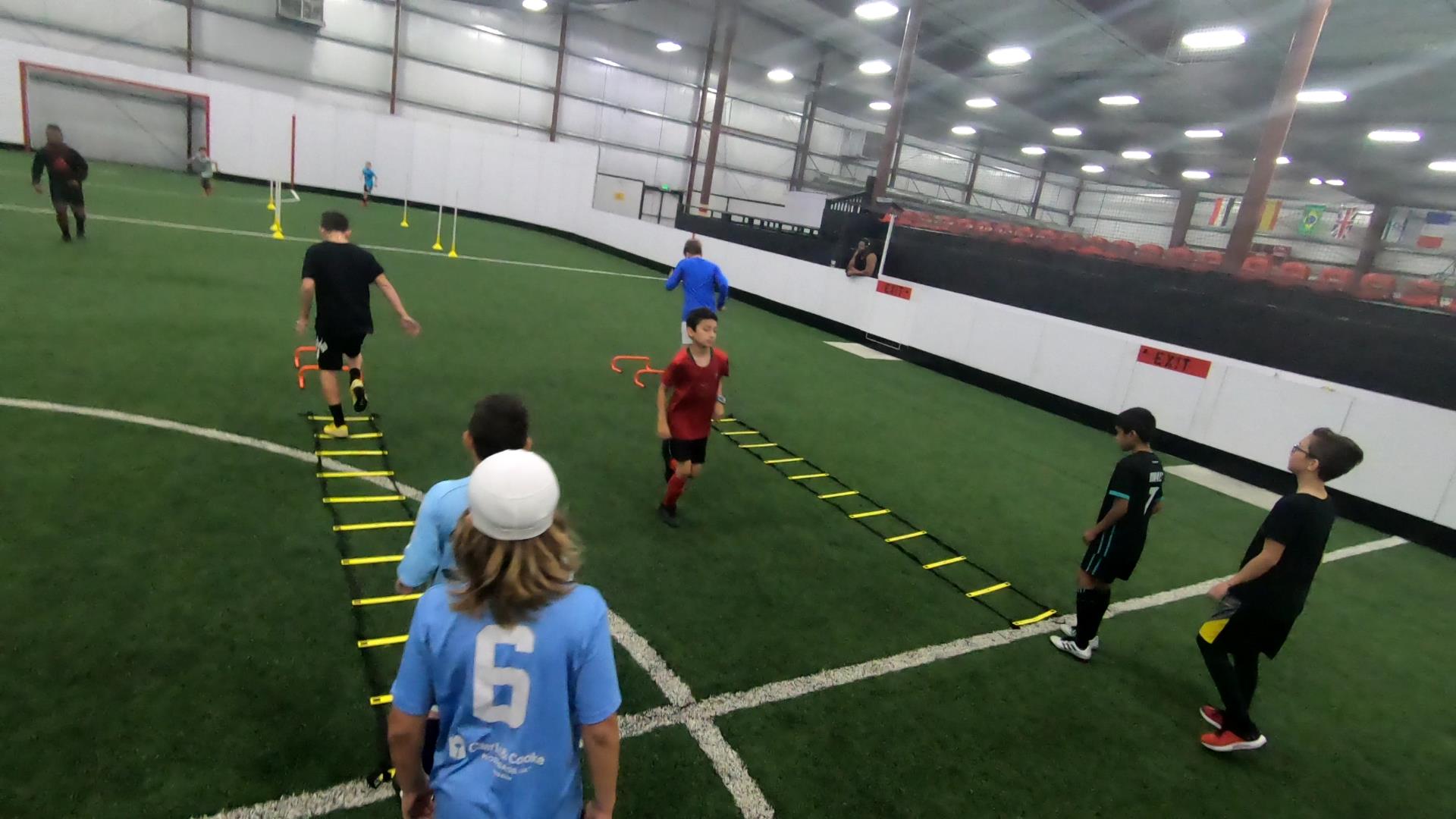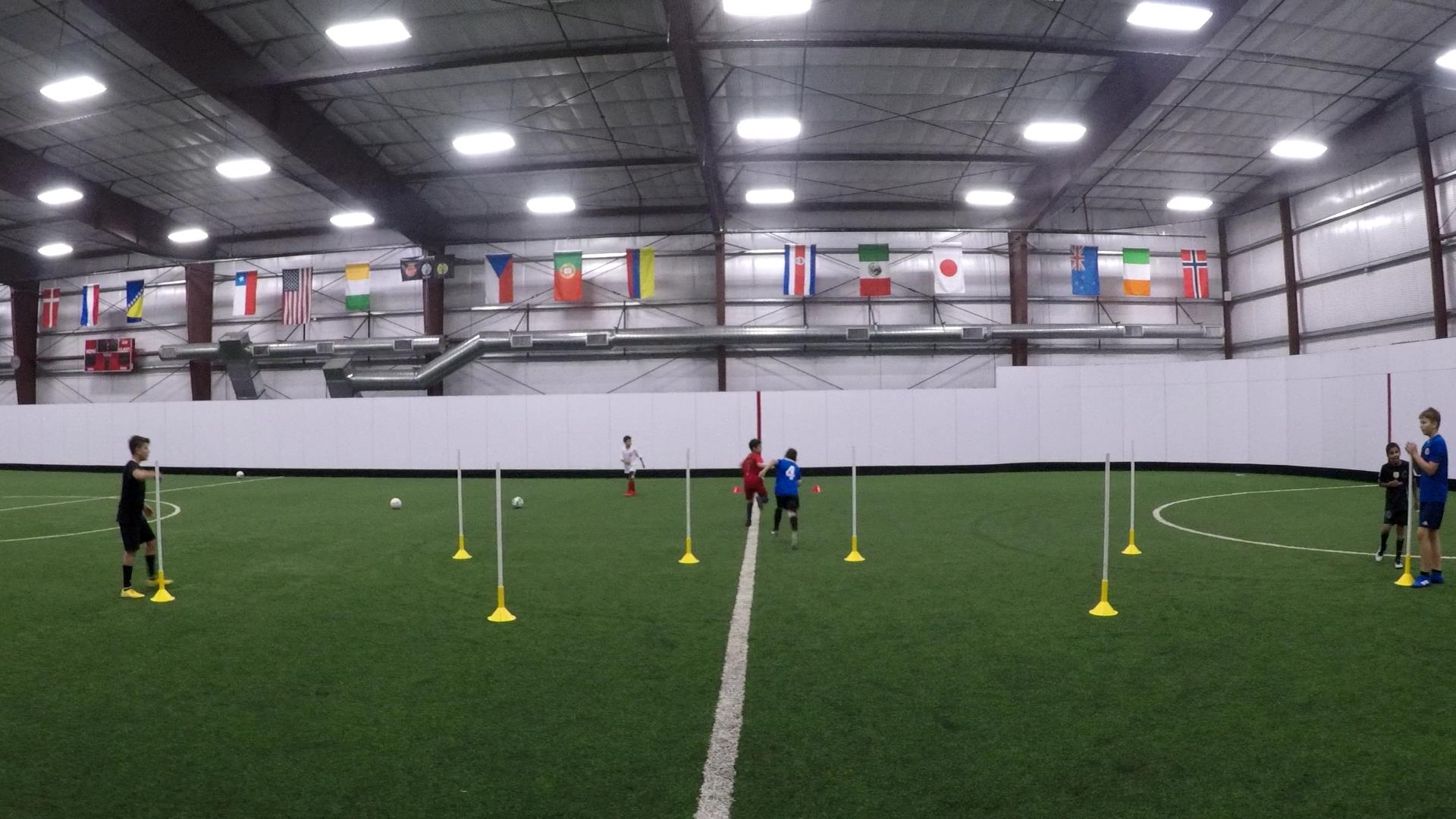Soccer Training for Kids
#16
SOCCER TRAINING FOR KIDS TIMELINE
- (00:00) JUGGLING - 10 MIN
- (00:58) RIGHT FOOT BALL CONTROL - 90 SEC
- (02:28) LEFT FOOT BALL CONTROL - 90 SEC
- (03:57) BOTH FEET FREESTYLE - 90 SEC
- (05:28) AIR BALL CONTROL - 10 MIN
- (08:45) AGILITY, SPEED & COORDINATION (Run the Ladder) - 4 REPS
- (12:43) AGILITY, SPEED & COORDINATION (Across the Ladder) - 4 REPS
- (14:28) AGILITY, SPEED & COORDINATION (Sideways Ladder) - 4 REPS
- (18:10) DRIBBLE THE CONES & SHOOT - 4 REPS
- (22:26) RIGHT FOOT PASS, TURN AND SHOOT - 4 REPS
- (27:15) LEFT FOOT PASS, TURN AND SHOOT - 4 REPS
- (30:03) PLANKS - 90 SEC
- (31:18) PUSHUPS - 90 SEC
- (32:54) GAME TIME - 25 MIN
Soccer Training for Kids
Soccer training for kids focused on getting lots of touches and movement with the soccer ball.
Kids in soccer training camp are 9 - 13 years old and various skill levels.
This training session is focused on ball control, dribbling the soccer ball and movement in different directions with and without the ball.
Boys are always reminded that training in their own time is in their control. The more they train by themselves, the better skills with the ball they will develop.
No structure, no coach, no rules. Just the young player having fun with the soccer ball and adding more and more touches to their feet.
Ball control skills start at home and keep developing through different soccer training drills to improve ball control as the player gets older, faster and stronger.
Soccer knows no age! Players are encouraged to outwork their peers. Hard work trumps talent when talent doesn't want to work hard.
Talent combined with hard work leads to a different level of playing.
Soccer Warm Up Drills
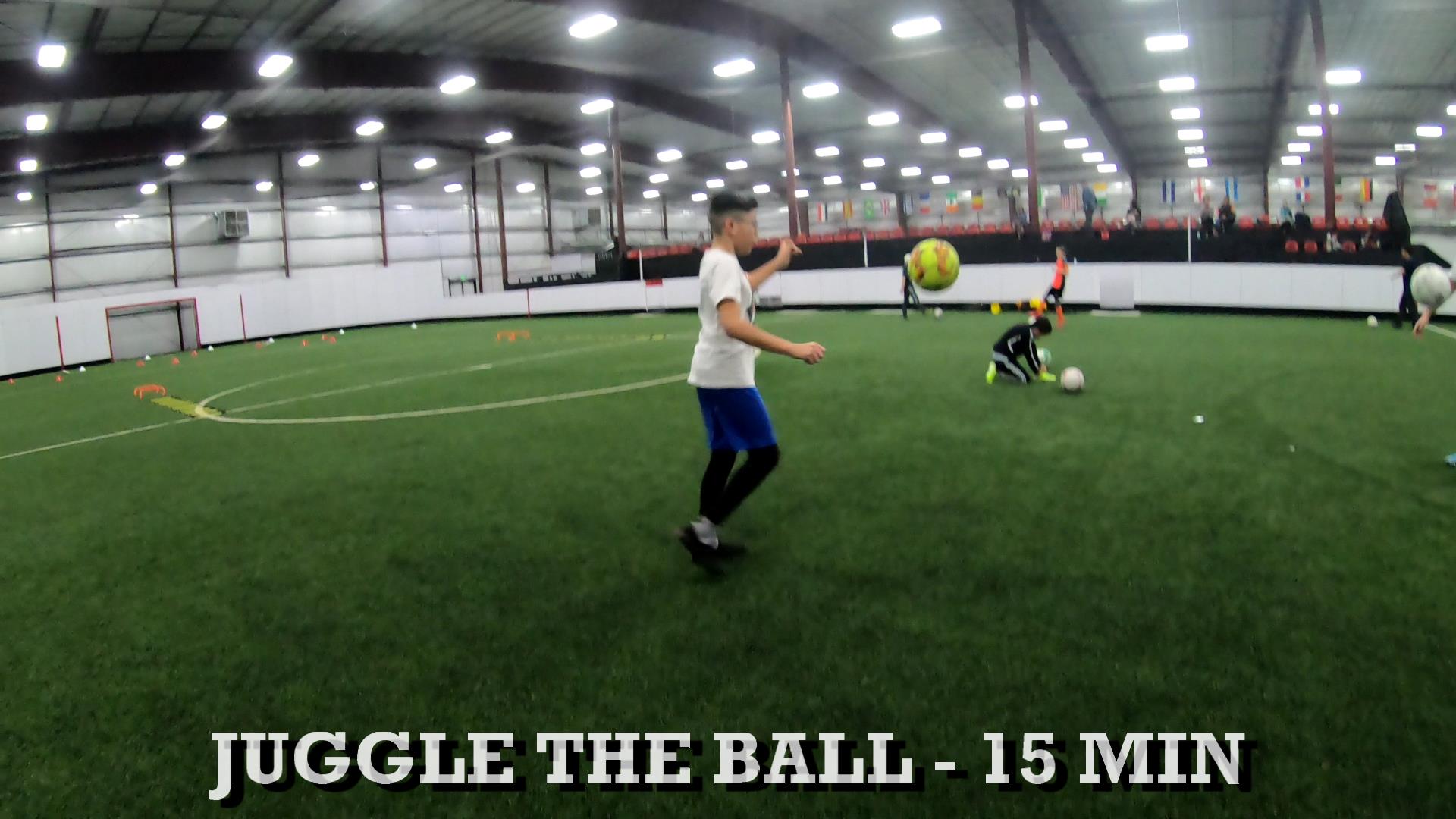
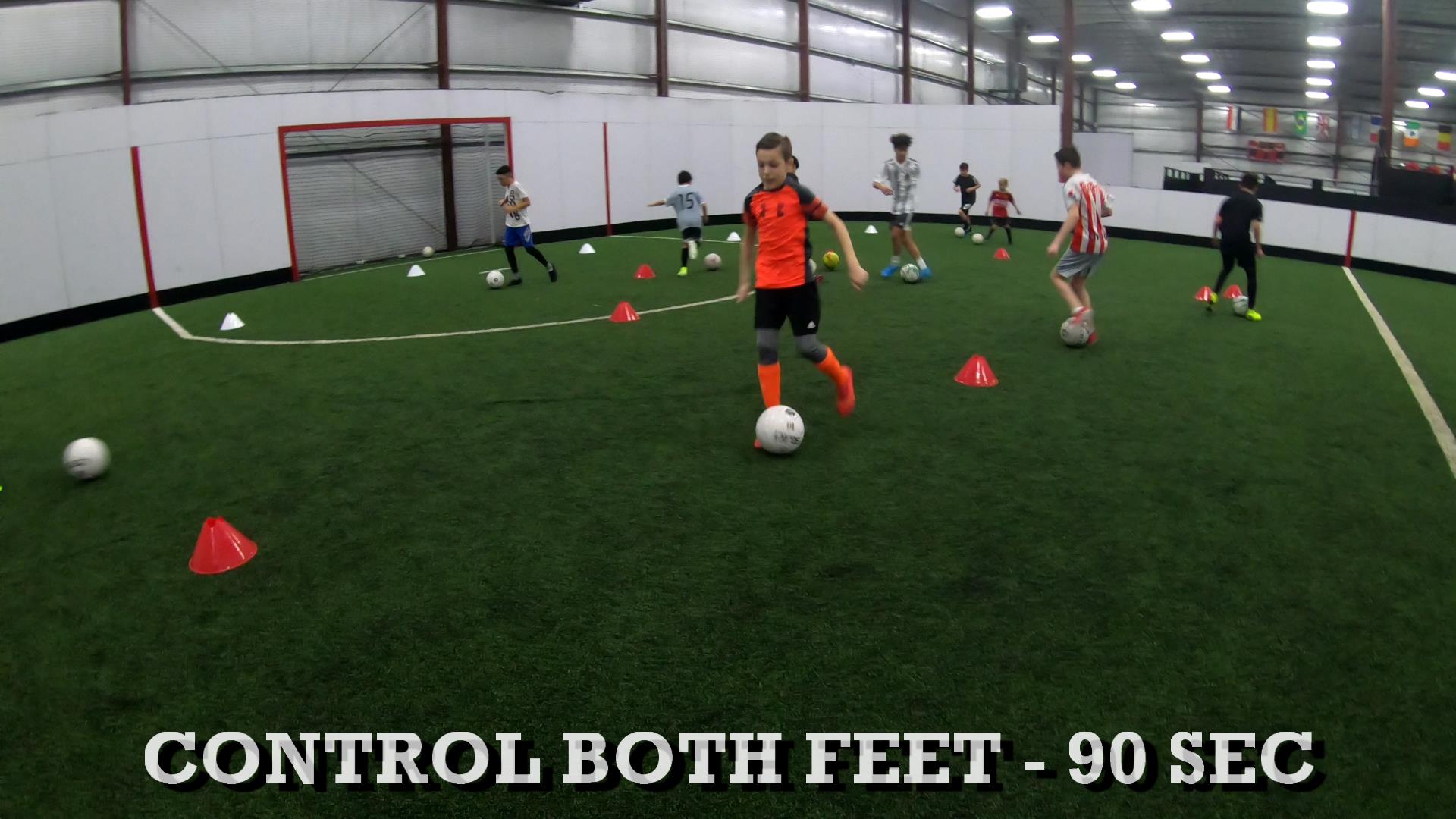
Juggling is one exercise that gets more fun as the player gets more comfortable with the soccer ball.
Getting comfortable with the ball takes time but the rewards come in the form of tricks or tekkers.
Juggling is fun, repetitive and works on players' touches, coordination and creativity.
Players can practice juggling to get more and more juggles with consistent practice.
Drinking water and staying hydrated is very important in soccer. Players are constantly reminded to drink water throughout the training session.
Soccer training for kids progresses with 100’s of touches through timed soccer ball control drills to get more familiar with the surface of the soccer ball.
Players touch the soccer ball around the grid to maximize touches with the soccer ball. Touches lead to better skills with the ball, and more confidence on the field.
- (00:00) JUGGLING - 10 MIN
- (00:58) RIGHT FOOT BALL CONTROL - 90 SEC
- (02:28) LEFT FOOT BALL CONTROL - 90 SEC
- (03:57) BOTH FEET FREESTYLE - 90 SEC
Air Ball Control Soccer Drills
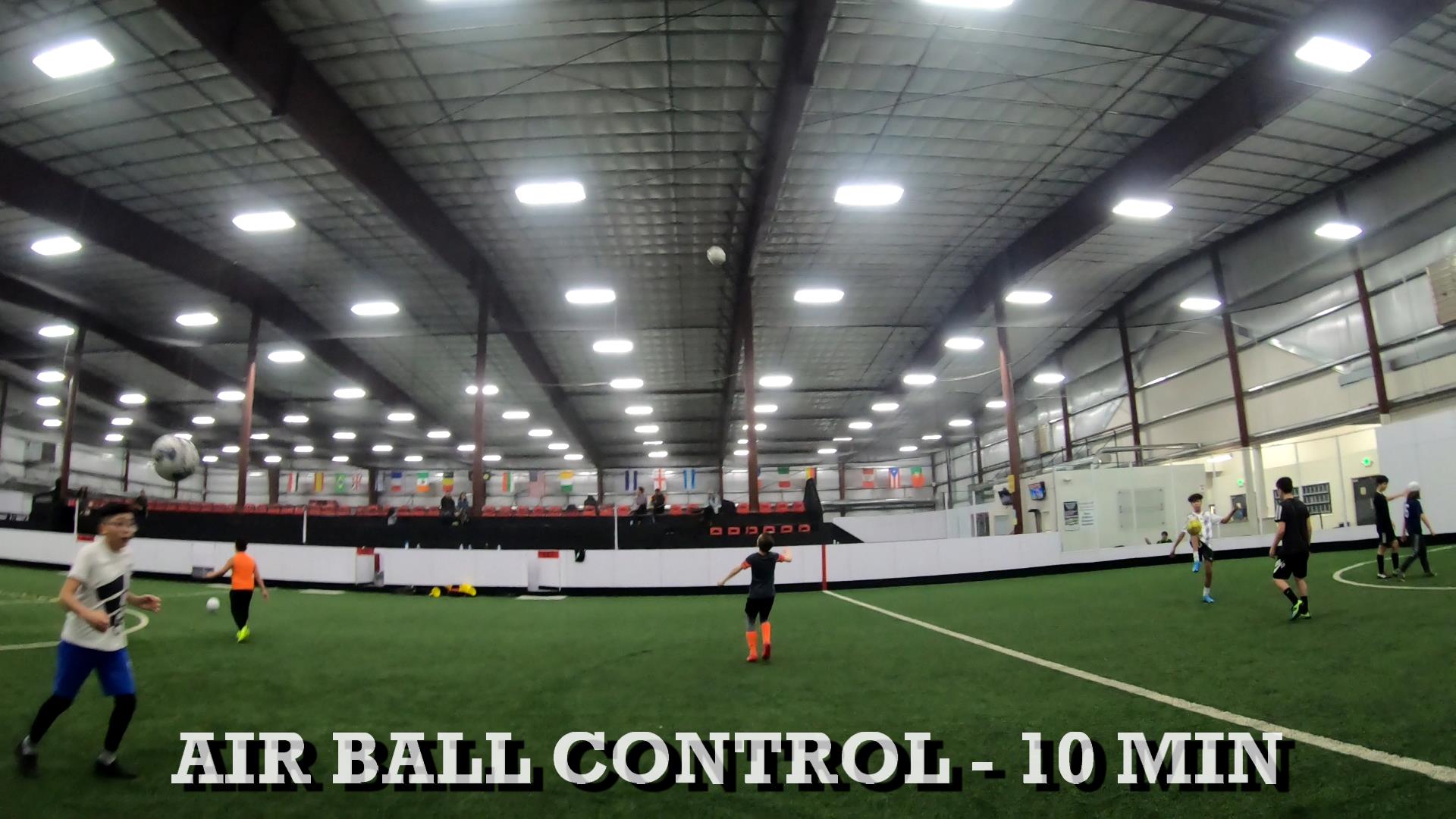
Young players often get scared when the ball is coming from the air.
Boys spend 10 minutes throwing the soccer ball in the air and bringing it under control with their toes, inside of the foot, or outside of the foot.
This exercise improves the players touches with air balls and more importantly confidence handling the soccer ball coming from the air.
- (05:28) AIR BALL CONTROL - 10 MIN
Soccer Training for Agility, Speed, and Conditioning
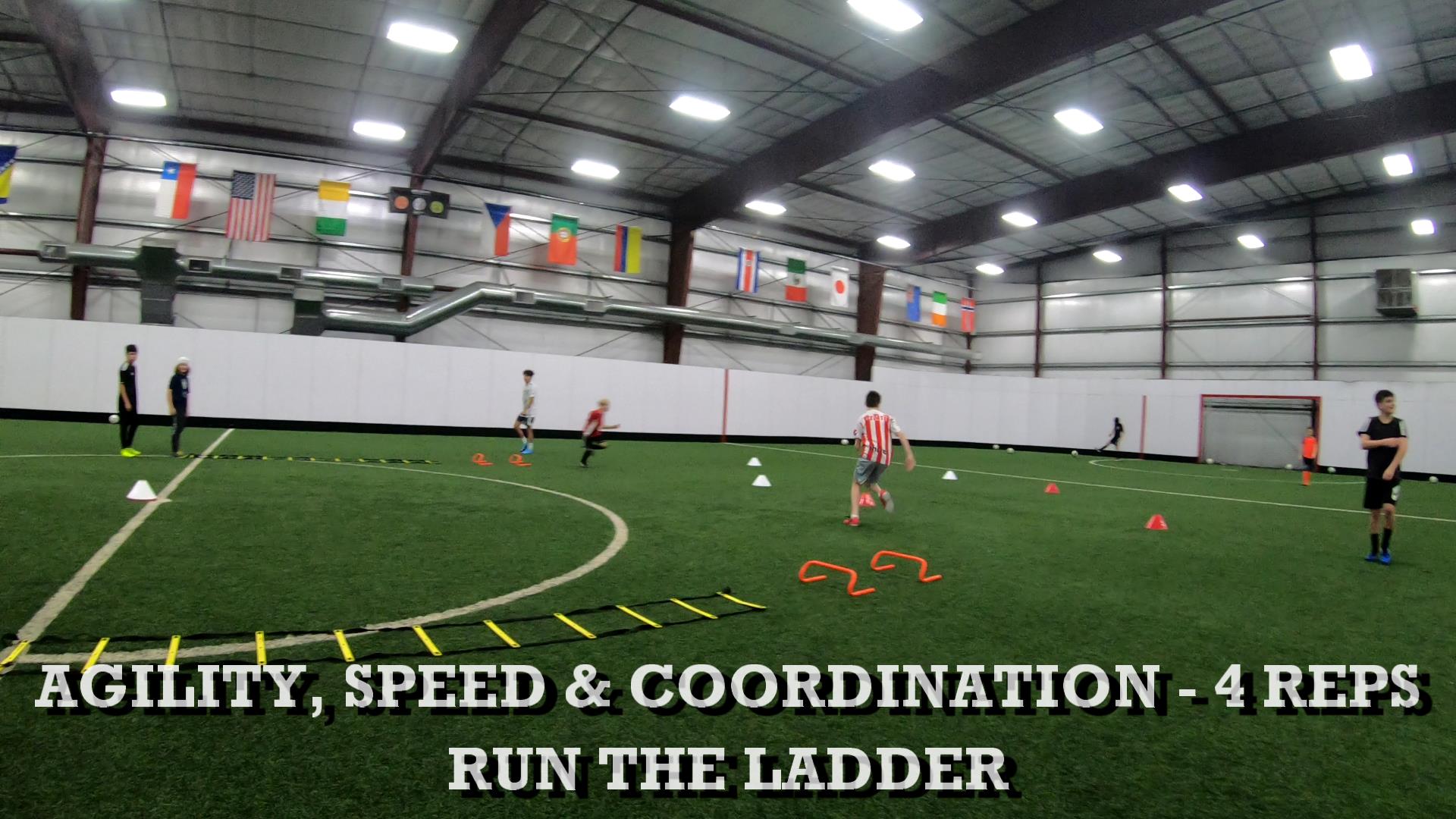
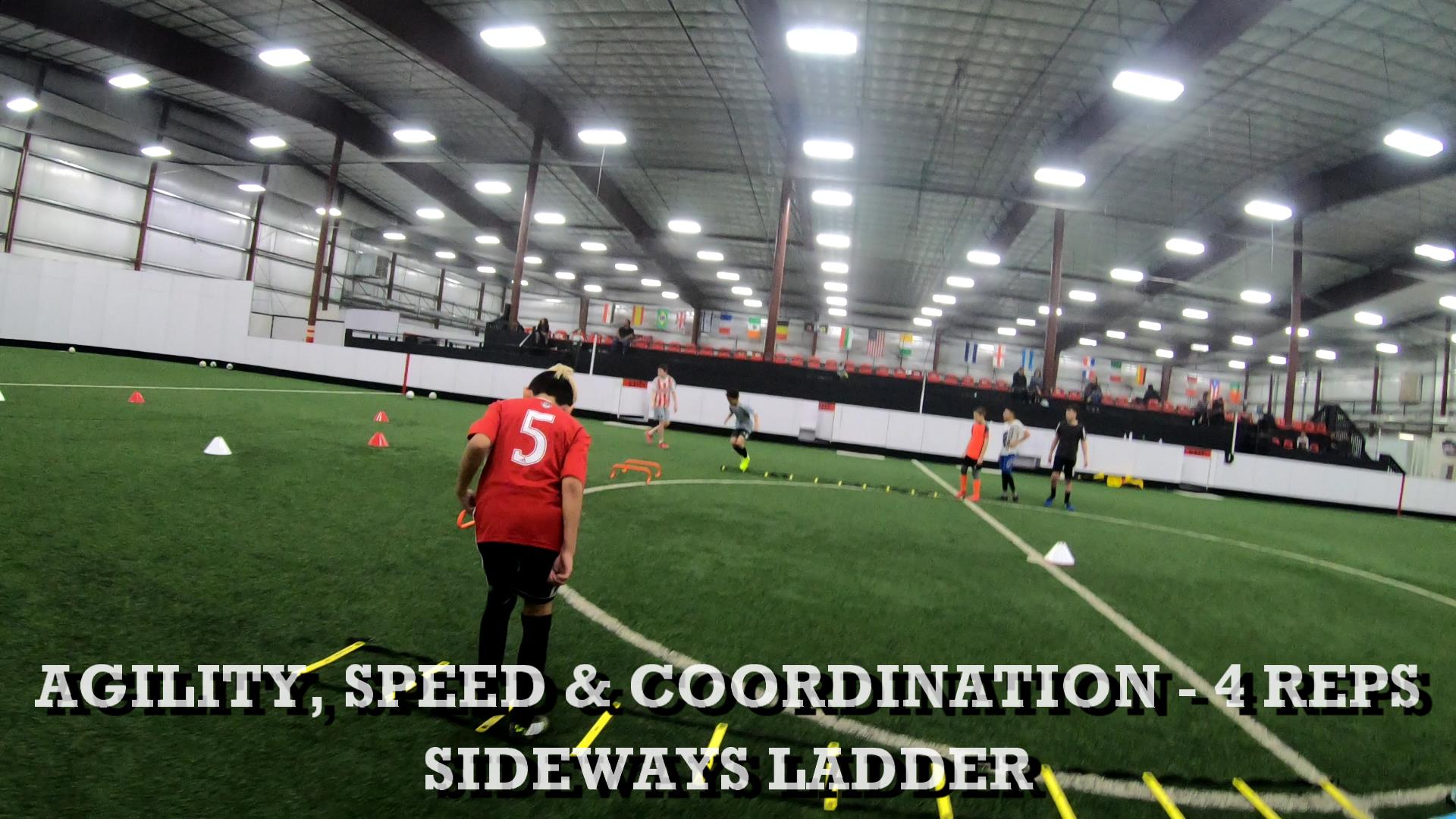
Soccer players need energy, quickness, agility and speed on the soccer field.
Training sessions are always planned to include running soccer drills without the soccer ball to help improve footwork, agility, speed, coordination and conditioning.
Young players lack structure and need to be taught proper body movement for their best performance on the field.
Equipment such are agility ladders, hurdles, agility poles and cones are great tools to improve footwork speed and body coordination.
- (08:45) AGILITY, SPEED & COORDINATION #1 (Run the Ladder) - 4 REPS
- (12:43) AGILITY, SPEED & COORDINATION #2 (Across the Ladder) - 4 REPS
- (14:28) AGILITY, SPEED & COORDINATION #3 (Sideways Ladder) - 4 REPS
Dribbling, Shooting, and Passing Soccer Drills
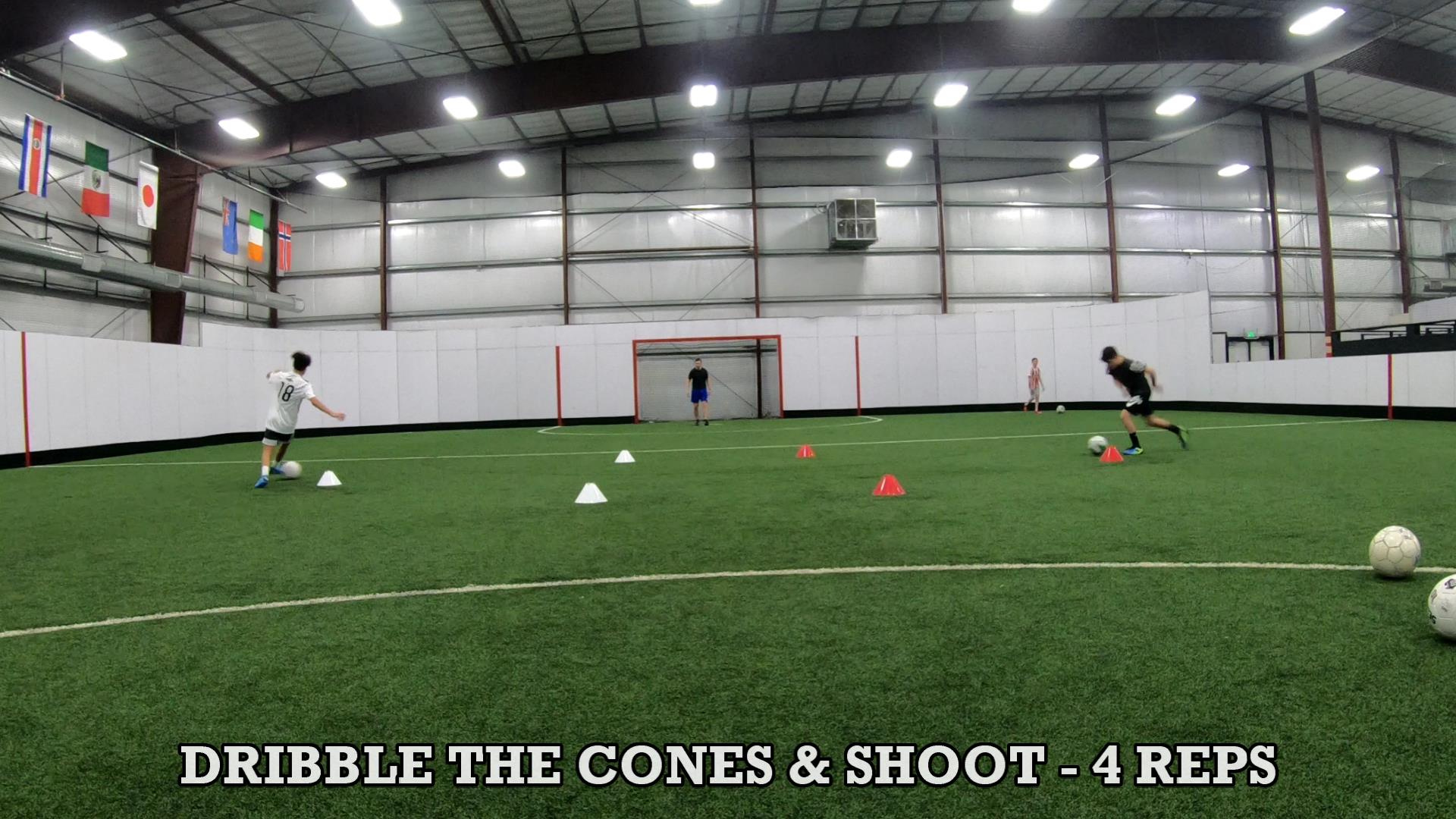
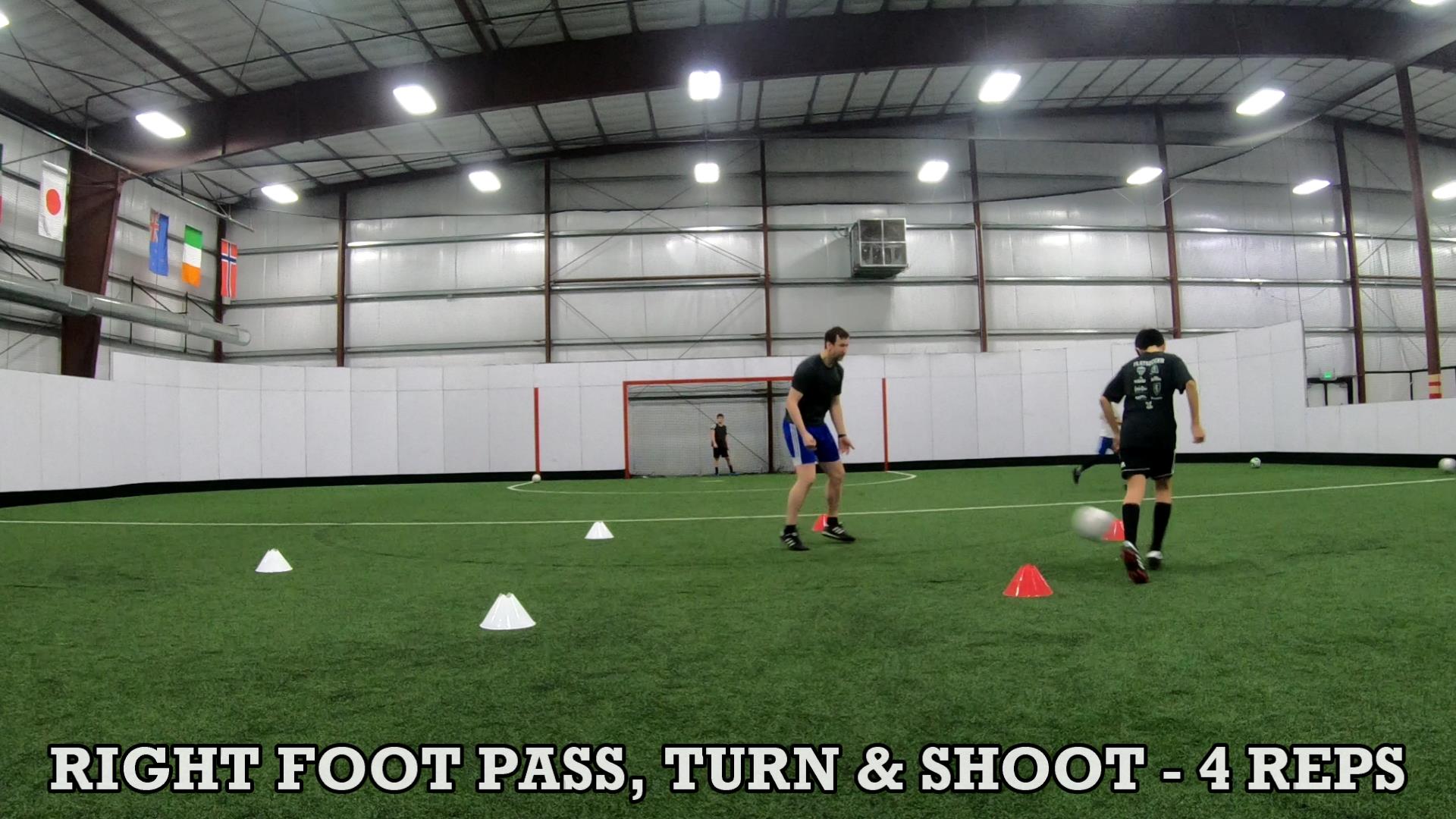
Cones are used to add more soccer dribbling touches attacking on goal and finishing with a shot.
Players are encouraged to keep the soccer ball close to their feet and attack the cones with pace.
Young boys love to compete. This soccer training drill is set up with 2 players competing against each other to dribble the ball through cones and shoot on goal.
Soccer training for kids continues with using the same grid but adding passing and moving around the grid for 5 - 6 passes, stepping back after the last pass, receiving and turning on goal to shoot.
Passes should be done with pace and solid contact on the ball with the instep of the foot.
- (18:10) DRIBBLE THE CONES & SHOOT - 4 REPS
- (22:26) RIGHT FOOT PASS, TURN AND SHOOT - 4 REPS
- (27:15) LEFT FOOT PASS, TURN AND SHOOT - 4 REPS
Soccer Strength Training
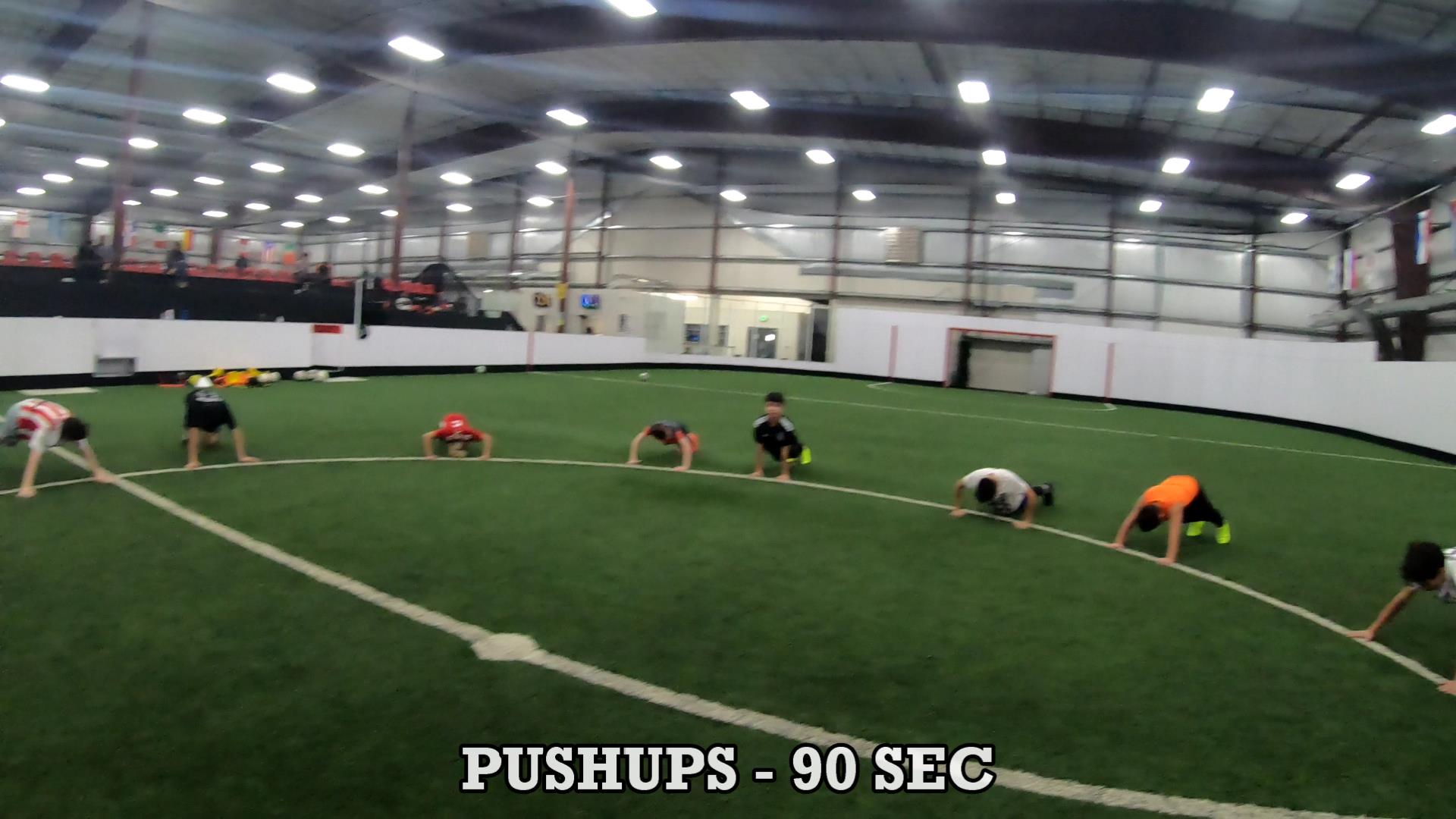
Soccer training for kids sessions end with some strength exercises and encouragement to do them at home in their own time.
I always mention to do planks and pushups at night, or in the morning, before or after brushing their teeth.
- (30:03) PLANKS - 90 SEC
- (31:18) PUSHUPS - 90 SEC
Soccer Fun
Game Time
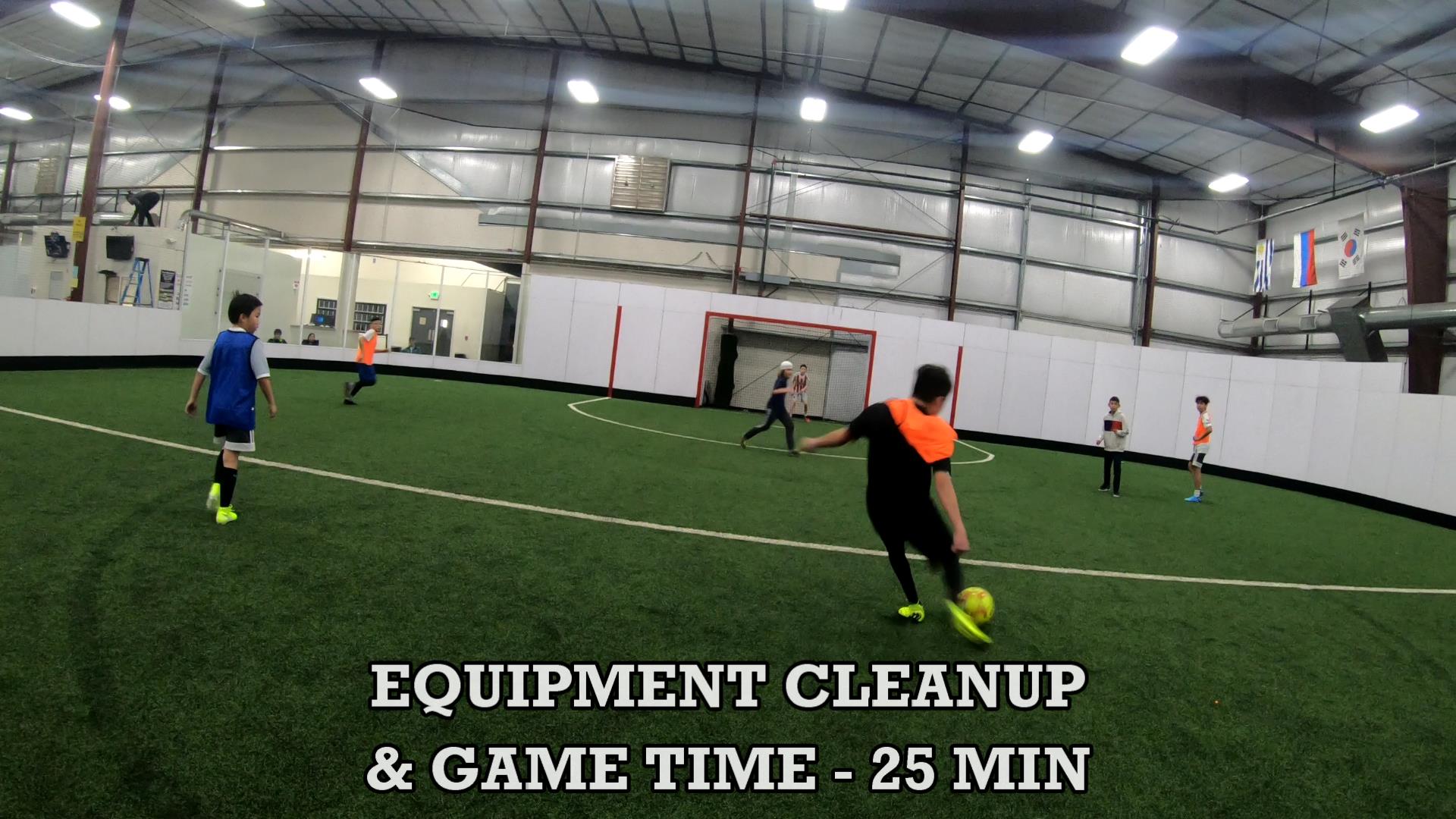
Players love to play the game, so a good training session always ends with a scrimmage or practice playing time.
My soccer training sessions run 2 hours, and boys always spend 20-30 minutes just playing soccer.
- (32:54) GAME TIME - 25 MIN
